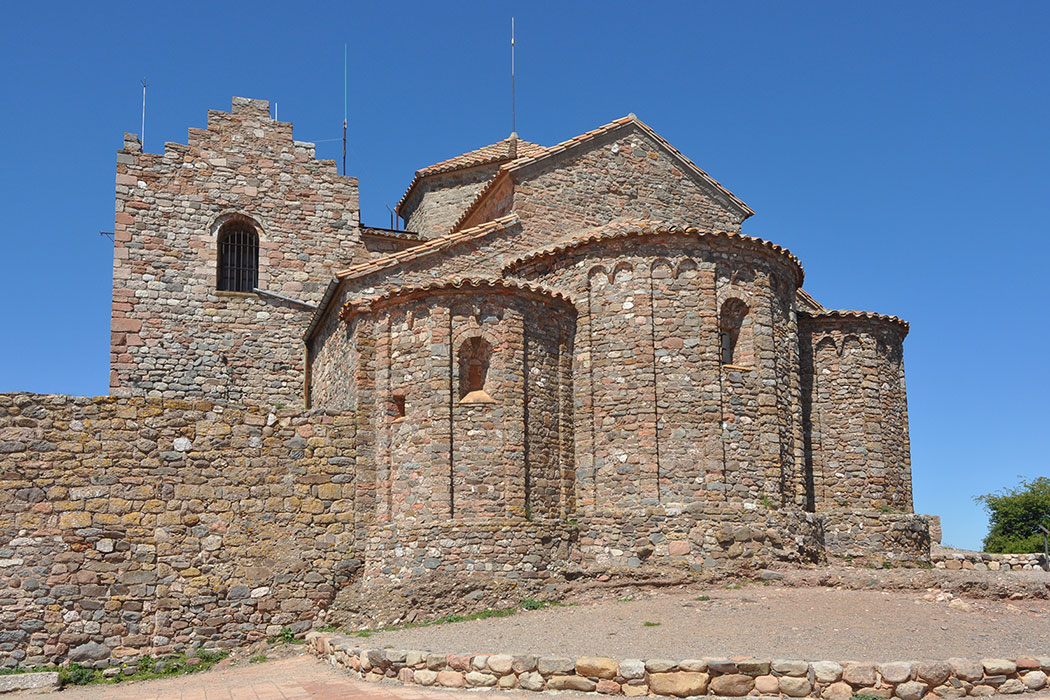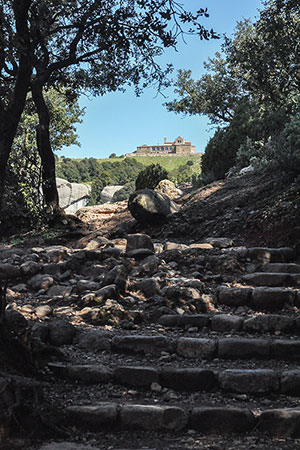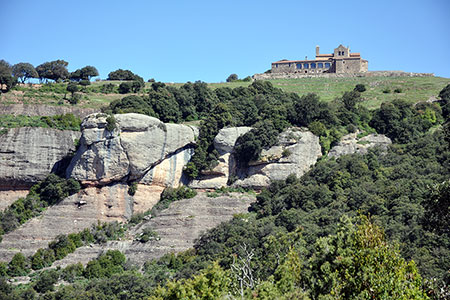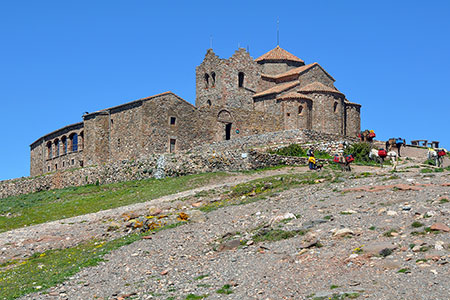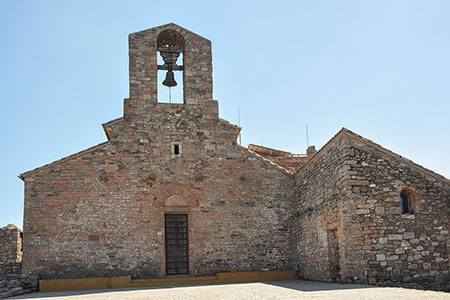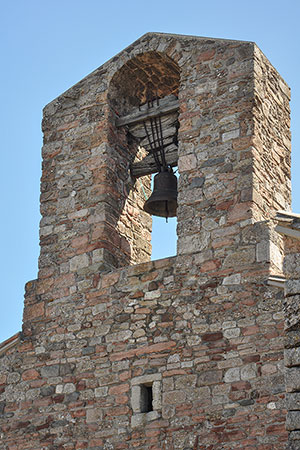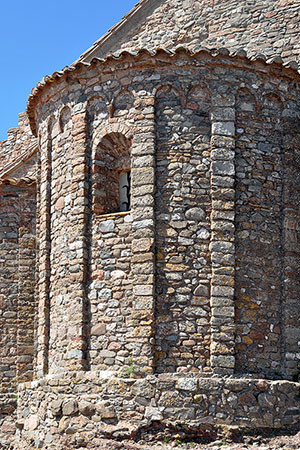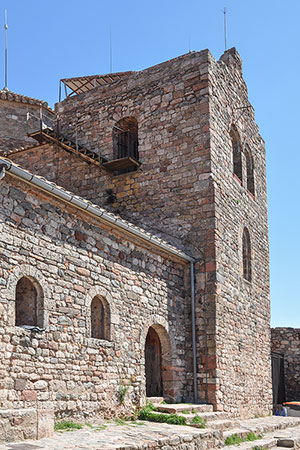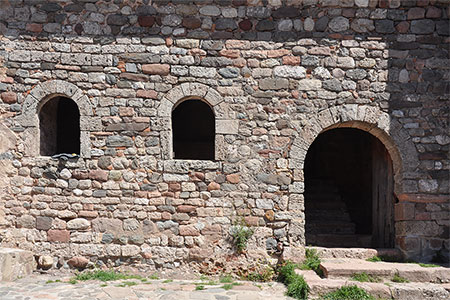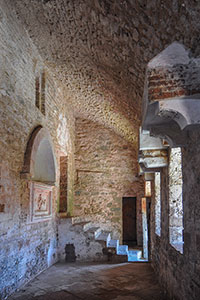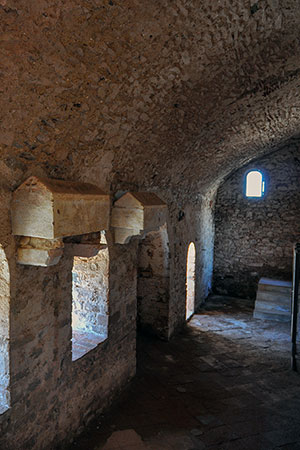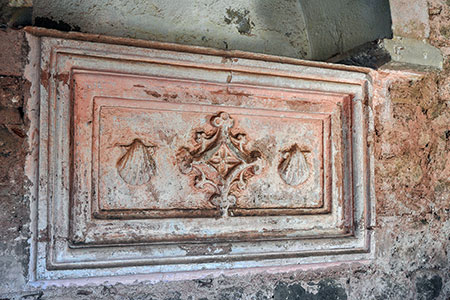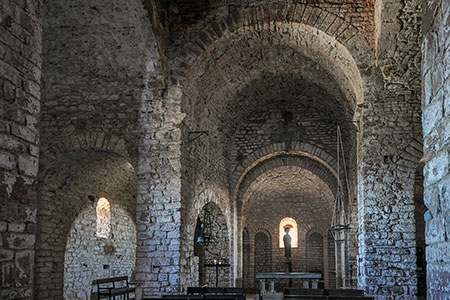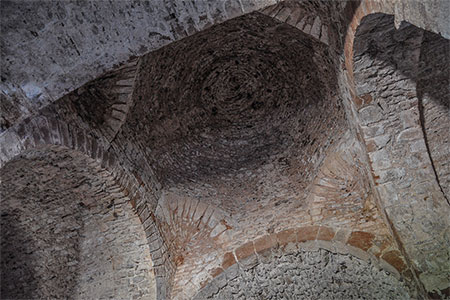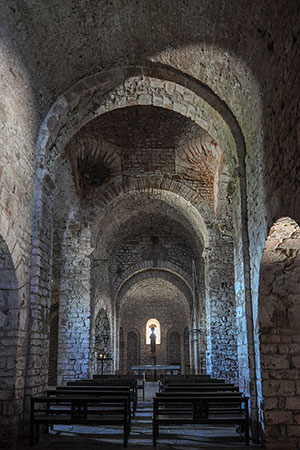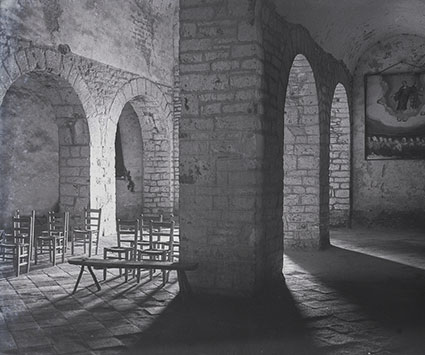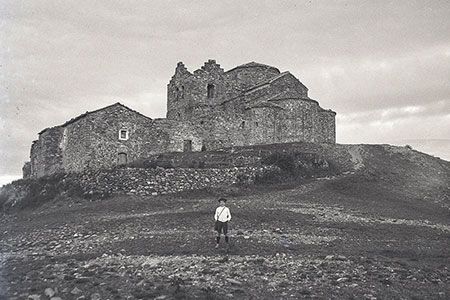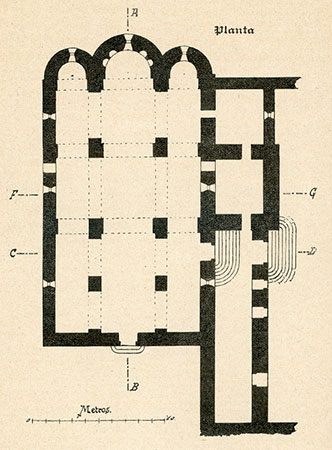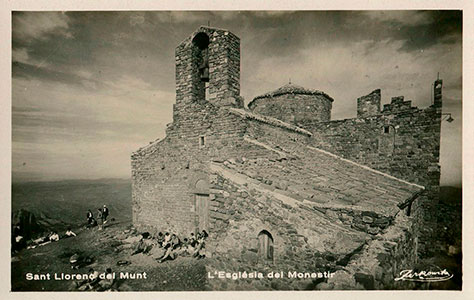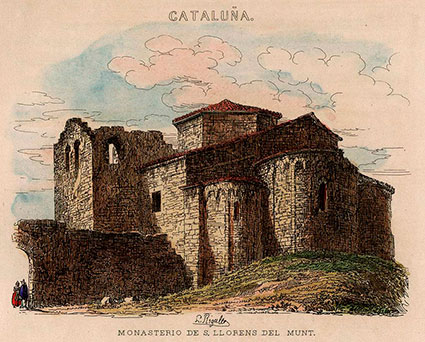There is evidence of the existence in this place of a church dedicated to Sant Llorenç, Santa Maria and Sant Miquel before 957. According to an ancient tradition was built on the initiative of the monks of Sant Cugat (Vallès Occidental), and of which the exact date of foundation is unknown. It maintained its dependence on Sant Cugat until 1013 when it was acquired by Count Ramon Borrell.
At that date, the monastery was founded as an independent abbey with the support of the counts, and its first abbot was Borrell, mentioned in 1018. Abbot Odeguer (c1050-1063) was one of the main promoters of its prosperity and initiated the construction of the church, which was consecrated in 1064, when the monastery had a community of about twenty monks, a number that decreased over time. In 1086 it was united with Saint-Pons-de-Thomières (Hérault), but regained independence again in 1098. The following year it became dependent on Sant Cugat.
In 1450 a fire damaged the church. Perhaps due to its isolation, it fell into decline, and from 1505 it began to have commendatory abbots. In 1608 it effectively joined the Congregation Claustral Tarraconense of which it had formed part since 1219, then it ceased to have community life, and the place was occupied by some religious. With the Peninsular War, the abandonment worsened, which lasted until 1868, when its restoration began thanks to the parish priest of Sant Llorenç Savall, Antoni Vergés. The church was reopened in 1871, and a dwelling was adapted in what had been a monastery. It was declared a national monument in 1931.
The church, with the galilee that opens on its south side, is the only apparent remains of the old monastery. It is a basilica-shaped building with three naves and a transept. It has an octagonal dome in the middle. The bell tower is very low, its construction was probably never completed.
- BALLBÈ I BOADA, Miquel (1982). Matadepera i Sant Llorenç del Munt. Vol. 2. Matadepera
- COSTA, Xavier (2019). Paisatges monàstics. El monacat alt-medieval als comtats catalans (segles IX-X). Tesi doctoral. Universitat de Barcelona
- FERRANDO, Antoni (1987). El monestir de Sant Llorenç del Munt i les seves possessions. Barcelona: P. Abadia de Montserrat
- PALADEVALL, Antoni (1961). El monasterio de Sant Llorens del Munt. Ausa, núm. 37, 38 i 39
- PLADEVALL, Antoni (1991). Sant Llorenç del Munt. Catalunya Romànica. Vol. XVIII El Vallès Occidental, el Vallès Oriental. Enciclopèdia Catalana. Barcelona
- PLADEVALL, Antoni; ADELL, Joan-Albert (1980). El monestir romànic de Sant Llorenç del Munt. Barcelona: Artestudi Ed.
- PUIG I CADAFALCH, Josep, i altres (1911). L'arquitectura romànica a Catalunya. Vol. II. Barcelona: I. E. Catalans
- PUIG I USTRELL, Pere (1995). El monestir de Sant Llorenç del Munt sobre Terrassa. Diplomatari dels segles X i XI. Vols. 1, 2 i 3. Barcelona: Fund. Noguera
- PUIG I USTRELL, Pere; i altres (2013). Diplomatari de Sant Llorenç del Munt (1101-1230). Barcelona: Fundació Noguera
- ROGENT, Elías (1891). Monasterio de Sant Llorens del Munt. Memoria descriptiva. Imprenta y Litografía de Henrich y Cª. Barcelona
- SOLÀ, Fortià (1964). Història de Sant Llorenç del Munt. Sabadell: Amigos de las Escuela Pías
- VERGÉS, Anton (1871). Sant Llorens del Munt, son passat, son present y venider. Barcelona: Pau Riera
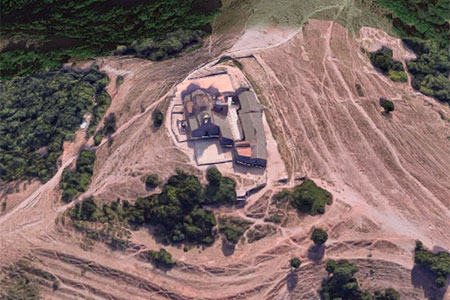
The Benedictine abbey of Sant Llorenç del Munt is located at the top of La Mola. You can get there from Can Pobla along the Camí dels Monjos in about 45 minutes. From Terrassa, you must take the BV1221 road in the direction of Mura and turn off at PK 7.1 on an unmarked track towards Can Robert (the path that leaves Boixaderes de Matadepera is shorter). If the track is in good condition, you can also leave the vehicle at Can Pobla
